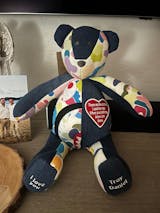Need a mask? Many states have required the use of face masks when out in public spaces so we put together all the info we have in one convenient post!
There are different kinds of face masks and by now everyone knows what an N95 or surgical mask is. Due to the lack of availability, these are for healthcare workers only.
For personal use, you can buy a mask from us (we donate a mask for every mask purchased) or there are plenty of free mask ideas and patterns available. We complied a list below of our favorites depending on your motivation and skill level.
First, here are the CDC guidelines about the use of masks/face coverings:
How to Wear a Cloth Face Covering
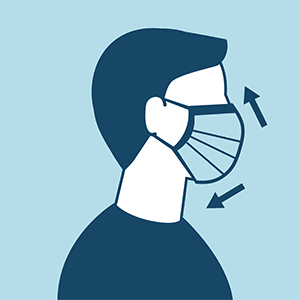
Cloth face coverings should—
- fit snugly but comfortably against the side of the face
- be secured with ties or ear loops
- include multiple layers of fabric
- allow for breathing without restriction
- be able to be laundered and machine dried without damage or change to shape
CDC on Homemade Cloth Face Coverings
Wearing cloth face coverings in public settings where other social distancing measures are difficult to maintain (e.g., grocery stores and pharmacies), especially in areas of significant community-based transmission.
CDC also advises the use of simple cloth face coverings to slow the spread of the virus and help people who may have the virus and do not know it from transmitting it to others. Cloth face coverings fashioned from household items or made at home from common materials at low cost can be used as an additional, voluntary public health measure.
Cloth face coverings should not be placed on young children under age 2, anyone who has trouble breathing, or is unconscious, incapacitated or otherwise unable to remove the mask without assistance.
The cloth face coverings recommended are not surgical masks or N-95 respirators. Those are critical supplies that must continue to be reserved for healthcare workers and other medical first responders, as recommended by current CDC guidance.
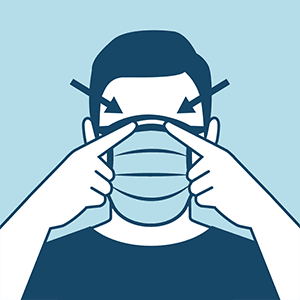
Should cloth face coverings be washed or otherwise cleaned regularly? How regularly?
Yes. They should be routinely washed depending on the frequency of use.
How does one safely sterilize/clean a cloth face covering?
A washing machine should suffice in properly washing a face covering.
How does one safely remove a used cloth face covering?
Individuals should be careful not to touch their eyes, nose, and mouth when removing their face covering and wash hands immediately after removing
BEST FACE MASK PATTERNS AVAILABLE ONLINE
Here are a few of our favorite patterns found online:
Fu Face Mask (from freesewing.org)

|
This pattern is the one I have been using because of the fit that contours to your face. The instructions are straightforward but you will need a sewing machine and basic sewing skills. For hospital donations, I use size MEDIUM and bias tape for the straps. For personal use, I use size MEDIUM and 6-1/2 inch elastic. |
SIMPLE SEWN MASK (from CDC website)
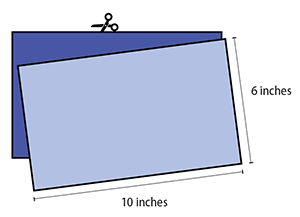
|
|
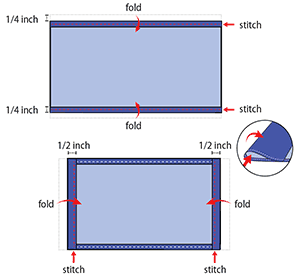
|
|
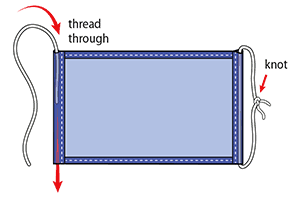
|
Don’t have elastic? Use hair ties or elastic head bands. If you only have string, you can make the ties longer and tie the mask behind your head. |
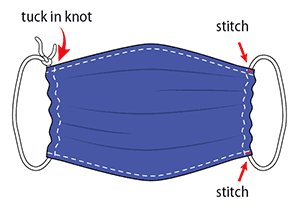
|
|
NO SEW FACE COVERING (from CDC Website)
This no-sew t-shirt face covering is simple and easy and found on the CDC website
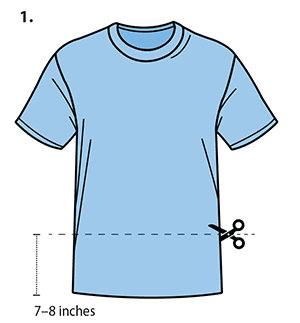
|
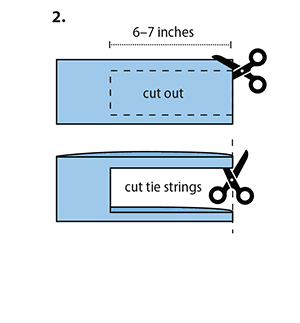
|
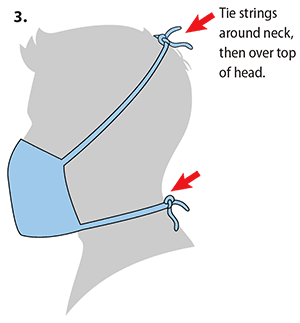
|
FACE MASK WITH FILTER POCKET
Many people have been looking for masks with a pocket to add a simple filter -paper coffee filters, HEPA vacuum bags, etc. For vacuum bags, \be careful which ones you use. Choose the ones made with polypropylene not fiberglass. Quick tip: reusable grocery bags are made of polypropylene so you can cut them up to use as your filter!
DONATE MASKS
We have been donating masks and just started selling masks to offset the costs to donate and ship them. If you are making extra masks, several organizations have stepped up as information hubs to see where and what is needed in your area.
DEACONESS Healthcare was one of the first I saw that set up a link by state with the ability to request and donate masks.
MASKS NOW COALITION is a facebook page that is coordinating the donation and requests for masks.
Be well and safe everyone!
xo-Jen




